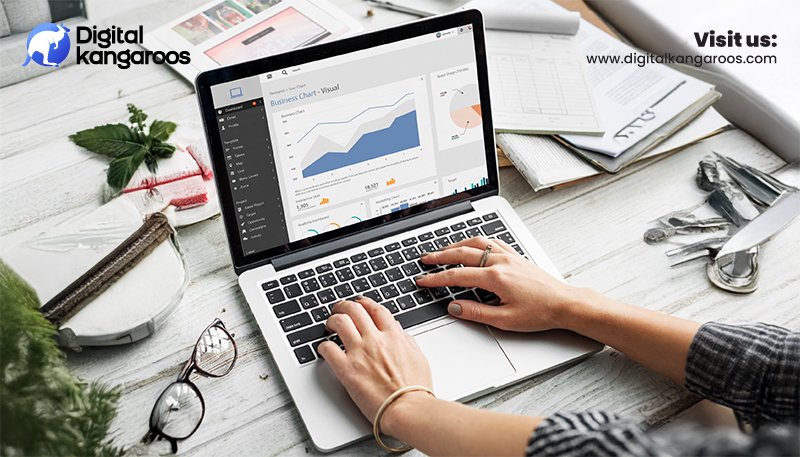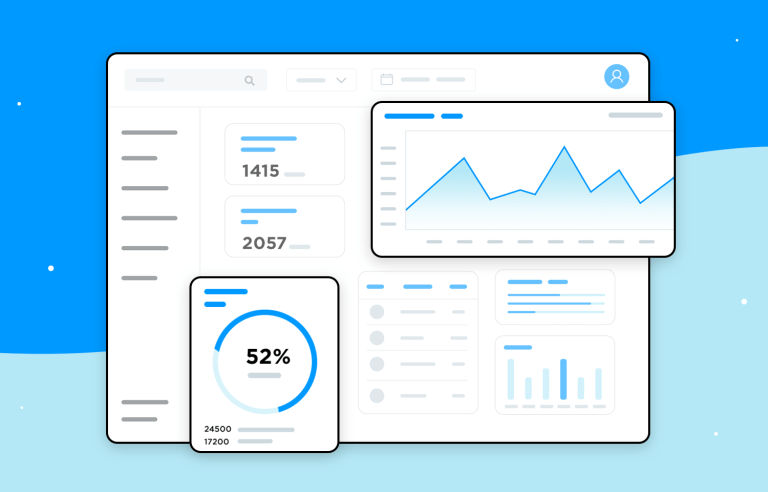Transforming Self-Doubt to Self-Mastery: Visualizing Your Way Past Imposter Syndrome
Understanding the Psychological Landscape of Imposter Syndrome
I've discovered that imposter syndrome affects even the most accomplished professionals, creating a persistent disconnect between achievement and self-perception. Through my exploration of the "reverse perspective" approach, I've found that visualization techniques can transform how we experience and overcome these feelings. In this guide, I'll share how visual externalization helps separate emotional responses from factual assessment, creating a powerful pathway to genuine confidence.
Understanding the Psychological Landscape
I've spent years researching imposter syndrome, and I've found that it's far more than just occasional self-doubt. It's a persistent psychological pattern where high-achieving individuals are unable to internalize their accomplishments and harbor a constant fear of being exposed as a "fraud." This disconnect between external success and internal self-perception can significantly hinder professional growth and personal confidence, creating a ceiling on what we believe we can achieve.

The neural pathways involved in imposter syndrome versus confident thinking
When exploring psychology research topics related to confidence, I've discovered that the traditional approach to imposter syndrome often focuses on validating feelings and gradually building self-belief. In contrast, the "reverse perspective" approach represents a paradigm shift - it encourages us to proactively adopt the mindset that we are already experts, creating a powerful cognitive framework for approaching challenges.
The cognitive patterns that reinforce imposter syndrome are particularly interesting. Despite clear evidence of competence - degrees, promotions, positive feedback - our brains can maintain persistent neural pathways of self-doubt. These patterns become self-reinforcing, as we tend to discount positive feedback while fixating on minor mistakes or criticisms.
The Cognitive Cycle of Imposter Syndrome
The self-reinforcing nature of imposter thoughts creates a cycle that's difficult to break without intervention:
flowchart TD
A[Achievement/Success] --> B[Attribute to luck/timing]
B --> C[Discount positive feedback]
C --> D[Fear of future failure]
D --> E[Anxiety & overpreparation]
E --> F[New achievement]
F --> A
style A fill:#FF8000,stroke:#333,stroke-width:1px
style F fill:#FF8000,stroke:#333,stroke-width:1px
What makes visualization techniques so effective for addressing imposter syndrome is their impact on neural pathways. When we visualize success or expertise, our brains create similar neural responses to actually experiencing those states. This creates new pathways that can gradually replace patterns of self-doubt.
I've found that visual externalization is particularly powerful because it helps separate emotional responses from factual assessment. By externalizing our thoughts and achievements into visual formats, we create distance between our emotional reactions and objective reality, making it easier to recognize distortions in our self-perception.
Impact of Visualization on Confidence Metrics
Research shows the effectiveness of different interventions for building confidence:
The Power of Perspective Reversal
I've found that "reverse imposter syndrome" isn't just a clever phrase—it's a transformative mindset shift that can fundamentally change how we approach challenges. At its core, this concept encourages us to assume expertise and capability rather than questioning it. It's about stepping into our professional roles with the quiet confidence that we belong there.

Reverse perspective in action during a high-stakes presentation
An important distinction I need to emphasize is the difference between harmful arrogance and healthy self-belief. Reverse imposter syndrome isn't about inflating your ego or dismissing areas for growth—it's about removing the unnecessary barriers of self-doubt that prevent you from fully applying your existing knowledge and skills. This approach is particularly valuable when presenting in front of a class or other high-pressure situations.
The evidence-based benefits of assuming expertise are compelling. Research indicates that when we approach challenges with the assumption of capability, we access more of our existing knowledge, think more creatively, and demonstrate greater resilience in the face of setbacks. This isn't just positive thinking—it's a strategic mental stance that enhances performance.
Traditional vs. Reverse Perspective Approach
Comparing the mental pathways of traditional and reversed imposter syndrome responses:
flowchart TD
subgraph Traditional["Traditional Approach"]
A1[Challenge Appears] --> B1[Question Competence]
B1 --> C1[Focus on Potential Failure]
C1 --> D1[Anxiety & Hesitation]
D1 --> E1[Reduced Performance]
end
subgraph Reverse["Reverse Perspective Approach"]
A2[Challenge Appears] --> B2[Assume Expertise]
B2 --> C2[Focus on Strategic Approach]
C2 --> D2[Confidence & Action]
D2 --> E2[Enhanced Performance]
end
style Traditional fill:#FFEEEE,stroke:#FF8000
style Reverse fill:#E6F7FF,stroke:#0080FF
I've experienced firsthand how visualization creates distance between emotional reactions and objective reality. When we visualize our thoughts as separate from ourselves, we can more easily identify cognitive distortions and challenge them. This is particularly powerful for those struggling to overcome mental blocks related to professional identity.
One technique I've found particularly effective is transforming abstract feelings of inadequacy into concrete, addressable visuals. By creating a visual representation of your imposter thoughts, you can literally "see" the disconnect between your emotional response and the factual evidence of your capabilities. This makes these thoughts less overwhelming and more manageable.
Key Insight: The reverse perspective approach isn't about denying areas for growth—it's about approaching those areas from a position of confidence rather than insecurity. This shift makes learning and development a process of expansion rather than remediation.
Visualizing Your Achievements
I've discovered that creating visual evidence boards of accomplishments is one of the most powerful ways to counter the cognitive distortions of imposter syndrome. These boards serve as concrete, undeniable proof of your capabilities and achievements, making it harder for your brain to maintain the fiction that you're "faking it."

A digital achievement board created with PageOn.ai's visualization tools
Using PageOn.ai's AI Blocks, I've been able to map my skill development over time in a way that makes growth visible and undeniable. This approach is particularly effective because it transforms vague feelings about your abilities into concrete, visual data points that show clear progression.
Skill Development Visualization
Mapping your skill growth over time creates visual evidence of your development:
flowchart LR
subgraph 2021["2021"]
A1[Basic Competence] --> B1[First Project]
B1 --> C1[Initial Feedback]
end
subgraph 2022["2022"]
A2[Skill Expansion] --> B2[Team Leadership]
B2 --> C2[Positive Reviews]
end
subgraph 2023["2023"]
A3[Advanced Techniques] --> B3[Complex Project]
B3 --> C3[Industry Recognition]
end
subgraph Today["Today"]
A4[Expert Status] --> B4[Mentoring Others]
B4 --> C4[Thought Leadership]
end
C1 --> A2
C2 --> A3
C3 --> A4
style 2021 fill:#FFF0E6,stroke:#FF8000
style 2022 fill:#FFE0CC,stroke:#FF8000
style 2023 fill:#FFD1B3,stroke:#FF8000
style Today fill:#FFC299,stroke:#FF8000
One of the most valuable techniques I've developed is visually distinguishing between facts and self-created narratives. When imposter feelings arise, I create a structured visualization with two columns: "Observable Facts" (what can be objectively verified) and "My Narrative" (the story I'm telling myself). This simple visual separation often reveals how far my self-perception has drifted from reality.
Building a visual portfolio of "proof points" has been transformative for me. These aren't just accolades and certificates—they include screenshots of positive feedback, visual representations of problems solved, and before/after comparisons showing the impact of my work. This portfolio becomes a powerful reference point when imposter feelings threaten to undermine my confidence.
Perception vs. Reality Gap
How professionals with imposter syndrome perceive their skills versus objective assessments:
PageOn.ai's Deep Search feature has been invaluable for integrating relevant success metrics and testimonials into my achievement visuals. By pulling in data from various sources—project management systems, feedback forms, performance reviews—I can create comprehensive visual representations of my impact that are grounded in concrete evidence rather than subjective feelings.
Transforming Abstract Fears into Concrete Action Plans
I've found that one of the most debilitating aspects of imposter syndrome is how it manifests as nebulous anxiety—a vague sense of dread that's difficult to address precisely because it's so undefined. Converting these nebulous fears into structured visual roadmaps has been a game-changer in my journey to overcome mental blocks.

Converting abstract fears into a structured visual action plan
Breaking down overwhelming challenges into manageable visual components is a technique I use regularly. When faced with a project that triggers imposter feelings, I create a visual breakdown of the required tasks, skills, and resources. This not only makes the challenge less intimidating but also helps me identify specific areas where I might need additional preparation or support.
Decision Tree for Navigating Self-Doubt
A structured approach to addressing imposter feelings in real-time:
flowchart TD
A[Imposter Feeling Arises] --> B{Is there evidence?}
B -->|Yes| C[Identify Specific Gap]
B -->|No| D[Recognize Cognitive Distortion]
C --> E[Create Learning Plan]
E --> F[Take Small Action Step]
D --> G[Review Achievement Portfolio]
G --> H[Practice Reverse Perspective]
F --> I[Evaluate Progress]
H --> I
I --> J[Celebrate Growth]
style A fill:#FF8000,stroke:#333,stroke-width:1px
style J fill:#FF8000,stroke:#333,stroke-width:1px
Creating decision trees for navigating moments of self-doubt has been particularly effective for me. These visual guides provide a clear protocol to follow when imposter feelings arise, helping me respond strategically rather than emotionally. This approach is especially valuable when trying to overcome procrastination triggered by confidence issues.
I've learned that visually separating emotional responses from factual situations provides incredible clarity. When facing a challenging situation, I create a two-column visualization: on one side, the objective facts of the situation; on the other, my emotional reactions. This simple technique helps me recognize when my response is disproportionate to reality.
Practical Application: When preparing for a high-stakes presentation, I use PageOn.ai to transform my vague anxieties ("I'll mess up") into a concrete visual plan that addresses specific concerns with targeted preparation strategies. This not only reduces anxiety but significantly improves my actual performance.
Using PageOn.ai to transform vague concerns into clear, actionable visual plans has revolutionized my approach to challenging situations. The platform's intuitive interface allows me to quickly create visual frameworks that organize my thoughts and highlight practical next steps, transforming paralyzing anxiety into productive action.
Effectiveness of Visual Planning on Anxiety Reduction
Measuring anxiety levels before and after implementing visual action planning:
Visual Techniques for Real-Time Confidence Building
I've found that developing visual anchors to center myself during high-pressure situations has been transformative for maintaining confidence when it matters most. These are simple, powerful images I can quickly call to mind that reconnect me with my expertise and capabilities when imposter feelings threaten to take over.

Using visual anchors in a high-pressure professional situation
Creating mental models for quick perspective shifts has become an essential part of my confidence toolkit. I've developed visual frameworks that help me rapidly reframe situations when I feel imposter syndrome creeping in. For example, I visualize myself as the expert consultant I would hire to solve this exact problem, which creates immediate psychological distance and perspective.
Mental Model for Perspective Shifting
A visualization technique for quickly adopting an expert mindset:
flowchart LR
A[Trigger Situation] --> B[Recognize Imposter Feeling]
B --> C[Visualize Expert Persona]
C --> D[Ask: What would my expert self do?]
D --> E[Adopt Expert Perspective]
E --> F[Take Confident Action]
style A fill:#FFF0E6,stroke:#FF8000
style F fill:#FFC299,stroke:#FF8000
Visualization exercises for pre-meeting or presentation confidence building have become a crucial part of my preparation routine. Just as athletes visualize successful performances before competition, I spend 5-10 minutes before important events visualizing myself communicating clearly, responding confidently to questions, and making a positive impact. This is particularly helpful when working to overcome fear of public speaking.
I've leveraged PageOn.ai to create portable visual reminders of my expertise that I can access on my phone or tablet. These concise visual summaries of my qualifications, past successes, and unique value proposition serve as powerful antidotes to sudden attacks of self-doubt, especially in high-stakes professional situations.
Impact of Pre-Event Visualization on Performance
Performance metrics with and without pre-event visualization practice:
One particularly powerful technique I've developed is visually reframing "comparison traps" into learning opportunities. When I catch myself unfavorably comparing my abilities to others, I create a visual framework that transforms these comparisons from threats to opportunities for growth. This simple shift changes the emotional valence of the comparison and makes it constructive rather than destructive.
Quick Technique: When imposter feelings arise, I use a visual technique I call "Zoom Out." I imagine seeing myself from progressively greater distances—first from across the room, then from outside the building, then from above the city. This creates immediate perspective and helps me see that my current anxieties are just a tiny part of a much bigger picture.
Building a Supportive Visual Environment
I've discovered that designing my physical and digital spaces to reinforce confidence has a profound impact on my mindset. Our environments constantly send us subtle messages about who we are and what we're capable of, so I've intentionally created spaces that remind me of my expertise and achievements.

A workspace designed to reinforce confidence through visual cues
Creating visual reminders of my growth journey and expertise development has been a powerful practice. I maintain a digital "growth timeline" that visualizes my professional evolution, highlighting key learning moments, challenges overcome, and skills acquired. This serves as a potent reminder that expertise is developed through consistent effort rather than innate talent.
Components of a Visual Confidence Toolkit
Essential elements for building a comprehensive confidence support system:
flowchart TD
A[Visual Confidence Toolkit] --> B[Achievement Portfolio]
A --> C[Growth Timeline]
A --> D[Perspective Shift Models]
A --> E[Feedback Collection]
A --> F[Action Plan Templates]
B --> G[Project Successes]
B --> H[Skills Mastered]
C --> I[Challenges Overcome]
C --> J[Learning Milestones]
D --> K[Expert Perspective]
D --> L[Mentor Perspective]
E --> M[Positive Feedback]
E --> N[Constructive Insights]
F --> O[Doubt Response Protocol]
F --> P[Preparation Checklist]
style A fill:#FF8000,stroke:#333,stroke-width:1px
Building a visual "confidence toolkit" for challenging moments has been one of my most effective strategies. This toolkit includes visual reminders of past successes, templates for reframing negative thoughts, and quick-reference guides for responding to self-doubt. Having these resources readily available means I can quickly access them when imposter feelings arise.
PageOn.ai has been instrumental in helping me integrate inspirational elements and achievement markers into my daily workflows. I've created custom dashboards that display key accomplishments, positive feedback, and growth metrics that I see every day as I work. This constant visual reinforcement helps counteract the tendency to forget or minimize achievements.
Impact of Environmental Design on Confidence Metrics
Before and after implementing a confidence-supporting environment:
Techniques for visually documenting positive feedback and success moments have become an essential part of my confidence practice. Rather than letting positive comments or successful outcomes fade from memory, I capture them visually—through screenshots, visual summaries, or graphical representations—and organize them in a way that makes them easy to revisit when I need a confidence boost.
Environmental Tip: I've found that changing my computer and phone wallpapers to display visual reminders of my expertise or past achievements creates subtle but persistent confidence cues throughout my day. These small environmental adjustments can have a surprisingly powerful cumulative effect.
From Visualization to Embodiment
I've learned that while visualization is powerful, the ultimate goal is embodiment—bridging the gap between seeing yourself differently and actually feeling different. This transition from intellectual understanding to lived experience is where the true transformation occurs.

The physical manifestation of internal confidence shifts
The science behind visualization's impact on neural pathways is fascinating. When we consistently visualize ourselves as confident and capable, our brains create new neural connections that support this self-image. Over time, these pathways strengthen, making confidence feel more natural and automatic. This is why consistent visual reinforcement is so important—it's literally reshaping your brain's default responses.
The Embodiment Process
How visualization practices translate into embodied confidence:
flowchart LR
A[Visual Practice] --> B[Neural Pathway Formation]
B --> C[Repeated Reinforcement]
C --> D[Automatic Responses]
D --> E[Physical Expression]
E --> F[Embodied Confidence]
F --> G[Identity Integration]
style A fill:#FFF0E6,stroke:#FF8000
style G fill:#FFC299,stroke:#FF8000
I've found that physically anchoring new perspectives through posture and presence is a powerful complement to visualization practices. Simple physical adjustments—standing taller, maintaining eye contact, speaking at a measured pace—can trigger the confidence states I've been visualizing. This creates a positive feedback loop between my mental imagery and physical experience.
Creating visual-physical practice routines for confidence building has been transformative for me. These routines combine visualization exercises with physical movements or postures that reinforce the desired mindset. For example, I might visualize handling a challenging situation successfully while standing in a confident posture, creating a multi-sensory experience that strengthens the neural connections.
Confidence Integration Timeline
The progression from visualization to embodied confidence:
PageOn.ai has been instrumental in helping me develop personalized confidence-building visualization sequences. The platform's flexibility allows me to create visual narratives that guide me through specific confidence-building practices, combining images, text prompts, and structured exercises into cohesive routines that I can access anywhere.
Embodiment Practice: I've developed a daily "confidence embodiment" ritual that takes just 2-3 minutes. I stand in front of a mirror, adopt a confident posture, make eye contact with myself, and verbally affirm my expertise while visualizing myself successfully handling my biggest current challenge. This multi-sensory practice helps bridge the gap between visualization and embodiment.
Measuring and Sustaining Your Transformation
I've found that creating visual metrics to track my confidence development has been essential for sustaining progress. What gets measured gets improved, and having concrete visual representations of my growth helps me recognize patterns, identify effective strategies, and maintain motivation over time.

A PageOn.ai dashboard for tracking confidence metrics over time
Identifying and visually documenting shifts in my professional approach has been a revealing practice. I now regularly capture "before and after" snapshots of how I handle various professional situations—from client presentations to team conflicts—noting the specific ways my approach has evolved as my confidence has grown.
Confidence Maintenance System
A cyclical approach to sustaining confidence growth:
flowchart TD
A[Track Metrics] --> B[Identify Patterns]
B --> C[Refine Techniques]
C --> D[Implement Changes]
D --> E[Evaluate Results]
E --> A
A --> F[Weekly Review]
B --> G[Monthly Analysis]
E --> H[Quarterly Reset]
style A fill:#FF8000,stroke:#333,stroke-width:1px
Techniques for visualizing future success scenarios have become a core part of my ongoing confidence practice. By regularly creating detailed visual representations of my future professional self handling challenges with ease and expertise, I'm constantly reinforcing the neural pathways associated with confidence and competence.
Building maintenance routines to sustain confidence growth has been crucial for long-term transformation. I've established regular check-ins with my visual confidence tools and metrics, creating a sustainable practice that prevents backsliding into old patterns of self-doubt. These routines are especially important during high-stress periods when imposter feelings are more likely to resurface.
Confidence Stability Over Time
Comparing confidence levels with and without maintenance practices:
PageOn.ai has been invaluable for creating evolving visual representations of my professional identity. As my confidence and capabilities grow, I use the platform to update my visual self-concept, ensuring that my internal image of myself keeps pace with my actual development. This prevents the common problem of "outdated self-image" that can perpetuate imposter feelings despite significant growth.
Sustainability Tip: I've found that scheduling a monthly "confidence audit" helps maintain progress. During this session, I review my visual metrics, update my achievement portfolio, refine my visualization practices based on recent experiences, and set specific confidence goals for the coming month.
Transform Your Self-Perception with PageOn.ai
Ready to overcome imposter syndrome and embrace your true capabilities? PageOn.ai gives you powerful visualization tools to transform abstract doubts into concrete confidence. Start creating visual expressions that reshape how you see yourself and your potential.
Begin Your Confidence Journey TodayEmbracing Your Authentic Expertise
Throughout my journey of overcoming imposter syndrome through reverse perspective, I've discovered that visualization isn't just a technique—it's a transformative approach to professional identity. By creating visual expressions of our capabilities, achievements, and potential, we build concrete evidence that challenges the abstract feelings of inadequacy that fuel imposter syndrome.
The reverse perspective approach—assuming expertise rather than questioning it—creates a powerful foundation for this visual transformation. When combined with structured visualization practices, this mindset shift enables us to bridge the gap between intellectual understanding and embodied confidence.
PageOn.ai has been an essential ally in this process, providing intuitive tools for creating the visual frameworks, metrics, and reminders that sustain confidence growth. From mapping skill development to visualizing future success scenarios, the platform's capabilities align perfectly with the needs of professionals seeking to overcome imposter syndrome.
As you begin your own journey from self-doubt to self-mastery, remember that visualization isn't about creating fantasy—it's about bringing clarity to reality. By seeing yourself clearly, with all your achievements and capabilities made visible, you create the foundation for authentic confidence that enhances not just how you feel, but what you can achieve.
The path from visualization to embodiment requires consistency and patience, but the transformation it enables is profound. As you integrate these practices into your professional life, you'll find that what once required conscious effort becomes natural—the confident, capable professional you visualize becomes simply who you are.
You Might Also Like
Strategic AI Marketing Investment Roadmap: Maximizing ROI from the $360 Billion Surge | 2025 Marketing Tech Budget Guide
Navigate the $360 billion AI investment surge with strategic marketing technology budget allocation. Discover proven frameworks for maximizing ROI from AI marketing tools in 2025.
Creating Visual AI Ethics Frameworks: A Leadership Guide for Modern Business | PageOn.ai
Discover how to develop comprehensive visual AI ethics frameworks for your organization. This guide helps business leaders translate complex ethical principles into clear visual guidelines.
The Meta-Mind Advantage: How Self-Aware AI Strategy Defines Market Leadership in 2025
Discover why metacognitive AI strategy separates industry leaders from followers in 2025. Learn frameworks for building self-aware AI implementation that drives competitive advantage.
Unleashing the Power of Agentic Workflows: Visual Clarity for Complex AI Processes
Discover how to transform complex agentic workflows into clear visual representations. Learn to design, implement and optimize AI agent processes with PageOn's visualization tools.
